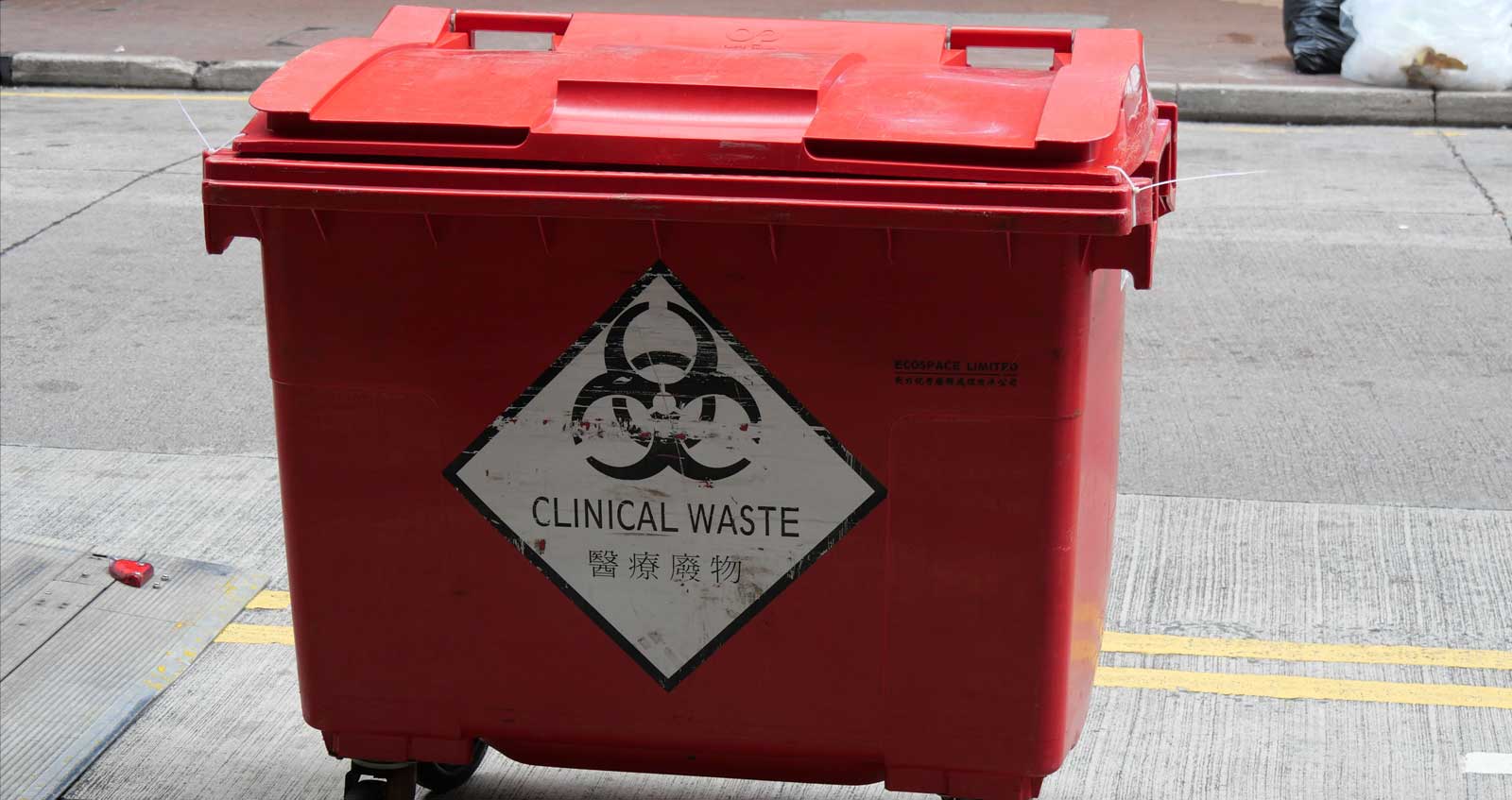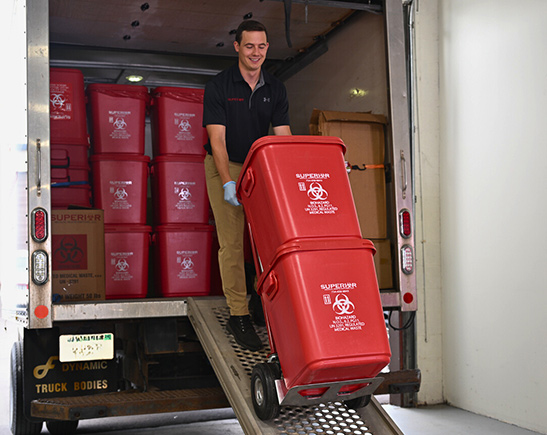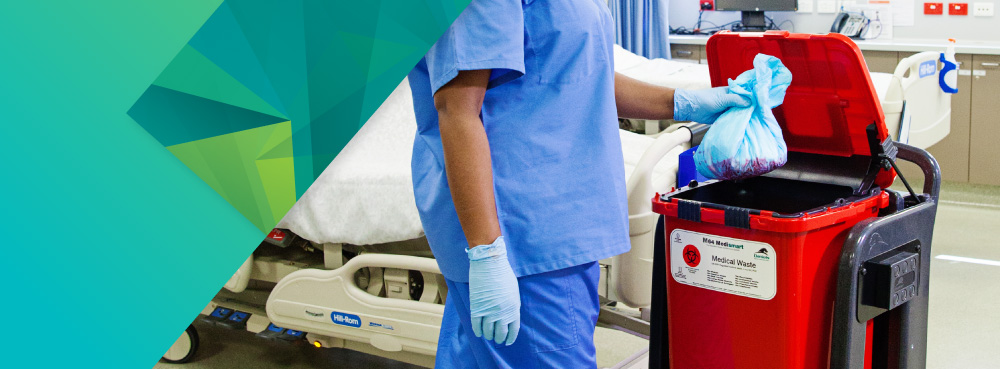Proactive Health Solutions: Choosing the Best Medical Waste Removal Near You
Proactive Health Solutions: Choosing the Best Medical Waste Removal Near You
Blog Article
Stay Ahead of Laws: Professional Suggestions on Medical Garbage Disposal
In a globe where the health care sector is continuously advancing, it is critical for clinical centers to remain ahead of guidelines when it comes to the proper disposal of clinical waste. From comprehending the different groups of medical waste to implementing the appropriate collection and segregation techniques, this conversation will certainly provide important understandings and workable ideas to aid facilities stay ahead of regulations in the ever-changing landscape of clinical waste disposal.
Understanding Clinical Waste Categories
Recognizing medical waste groups is vital for appropriate disposal and administration in healthcare facilities. Clinical waste describes any waste created by health care activities that may present a hazard to public health and wellness or the environment. It is vital to categorize medical waste precisely to ensure its risk-free handling, therapy, transport, and disposal.
There are several classifications of clinical waste that medical care facilities need to be accustomed to. The most common groups consist of infectious waste, pathological waste, sharps waste, pharmaceutical waste, and chemical waste. Each group has details standards and policies for its appropriate monitoring and disposal.
Transmittable waste consists of materials contaminated with blood or various other physical liquids, such as handwear covers, dress, and research laboratory societies. Pathological waste describes human tissues, body organs, or body components that require special delivery and disposal. Sharps waste includes used needles, syringes, and various other sharp objects that can trigger injury and send infections. Pharmaceutical waste makes up run out, extra, or polluted medicines that require mindful handling and disposal. Lastly, chemical waste includes solvents, anti-bacterials, and other chemical substances made use of in medical care facilities.
Staying Up-To-Date With Regulatory Adjustments
Staying current with regulatory adjustments is critical for health care facilities to make certain compliance and proper monitoring of clinical waste disposal. medical waste removal service. With policies regularly advancing, it is essential for healthcare facilities to remain current to stay clear of penalties, penalties, and prospective injury to the setting and public health and wellness
To remain in advance of regulatory adjustments, medical care facilities ought to develop a system for monitoring and monitoring updates. This can be done by subscribing to regulative newsletters, attending meetings and workshops, and actively taking part in market associations. Furthermore, facilities should designate a team participant or group in charge of remaining notified and disseminating info to relevant stakeholders.
Routine interaction with governing companies is additionally crucial. Health care centers ought to establish partnerships with neighborhood, state, and federal companies to ensure they understand any type of changes in policies that might impact their waste administration methods. This can be done via routine conferences, participation in public remark durations, and aggressive involvement with regulatory firms.
In addition, health care facilities must take into consideration partnering with waste management business that focus on medical garbage disposal (medical waste disposal services with WasteX). These companies are often skilled in the current laws and can give guidance and support to make certain compliance
Carrying Out Correct Collection and Partition Approaches
To efficiently handle medical garbage disposal, healthcare facilities need to establish proper collection and segregation methods according to regulative guidelines. Carrying out these approaches guarantees the secure handling and disposal of possibly harmful materials, shields the setting, and lessens the risk of injuries and infections to healthcare employees and the general public.
Correct collection and find out here now partition methods entail the use of designated containers and identifying systems. Medical care centers ought to offer clearly identified containers for various sorts of medical waste, such as sharps, infectious waste, pharmaceutical waste, and non-hazardous waste. These containers need to be color-coded and clearly marked to stay clear of complication and promote very easy recognition.
Additionally, medical care centers must train their staff on the proper treatments for gathering and setting apart clinical waste. This consists of enlightening them on the various kinds of waste, the ideal containers to make use of, and the relevance of following regulations and standards. Regular training sessions and refresher training courses must be conducted to ensure that team members remain up-to-date on finest methods.
Furthermore, medical care facilities should develop a system for routine collection and disposal of medical waste. This may entail partnering with qualified waste administration business that focus on medical waste disposal. These companies will guarantee that the accumulated waste is moved and thrown away in conformity with regulatory needs.
Picking the Right Disposal Methods

Incineration is one of one of the most typical and effective techniques for taking care of particular sorts of medical waste, such as pathological waste and sharps. It entails the controlled combustion of waste at heats, minimizing it to ash. Nonetheless, incineration can launch hazardous contaminants into the air and add to air pollution.

Chemical therapy entails the usage of chemicals to counteract the waste and sanitize. Microwave treatment makes use of microwave energy to heat and sanitize the waste.
Ensuring Compliance Via Documentation and Training
After very carefully taking into consideration the proper disposal methods for clinical waste, health care centers must guarantee conformity with policies and minimize ecological impact by applying reliable documents and training procedures. This action is crucial in preserving a sustainable and risk-free environment for both healthcare employees and the basic public.

Medical care employees who handle clinical waste should get suitable training on waste partition, handling, and disposal procedures. By giving extensive training, health care facilities can encourage their staff to make enlightened choices and decrease the threat of improper waste disposal.
Conclusion
To conclude, remaining ahead of laws in medical waste disposal is essential for medical care facilities. medical waste removal. Understanding the different categories of clinical waste, remaining upgraded with governing modifications, executing correct collection and partition approaches, choosing the suitable disposal approaches, and making sure compliance via paperwork and training are all necessary actions. By adhering to these guidelines, health care organizations can successfully take care of and get rid of of clinical waste in a liable and secure way
From understanding the various classifications of medical waste to implementing the best collection and segregation methods, this conversation will certainly provide actionable ideas and important insights to help facilities remain ahead of guidelines in the ever-changing landscape of medical waste disposal. - medical waste disposal services with WasteX
The most common classifications consist of contagious waste, pathological waste, sharps waste, pharmaceutical waste, and chemical waste. Health care facilities need to give clearly classified containers for various types of medical waste, such as sharps, contagious waste, pharmaceutical waste, and non-hazardous waste. Healthcare facilities my company must establish a thorough system to tape and track all elements of medical waste disposal, including kinds of waste generated, amounts, and disposal techniques made use of. Medical care employees who manage clinical waste must get ideal training on waste partition, handling, and disposal procedures.
Report this page